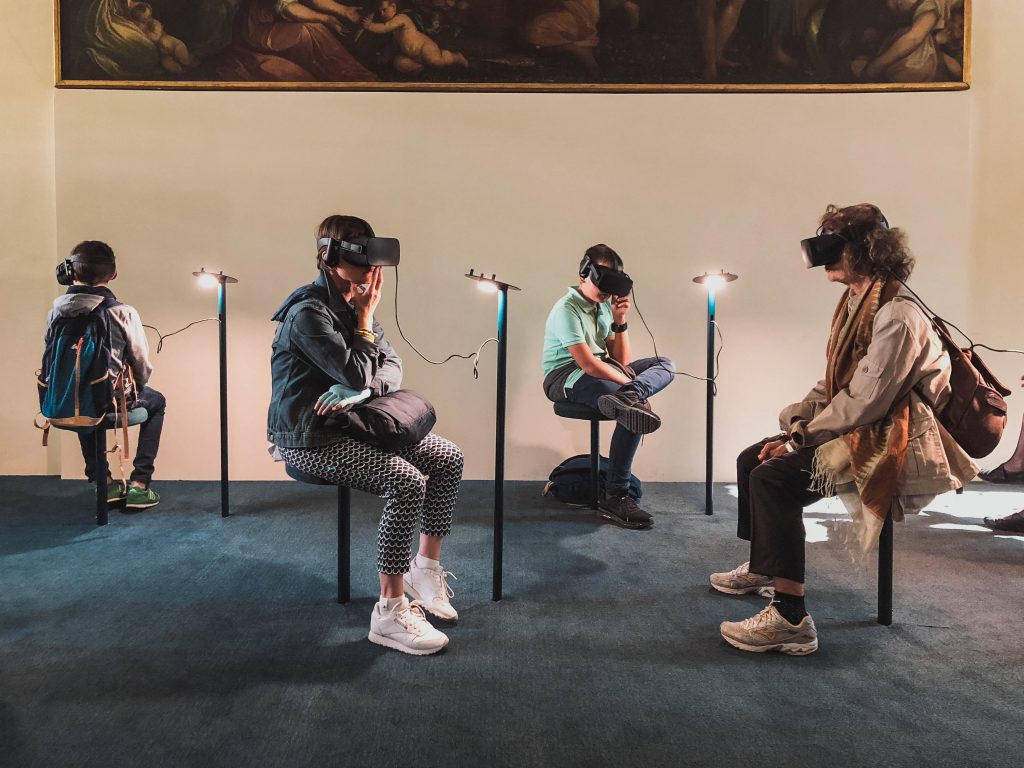The readings this week articulated trends as though they were not yet common practices in education. In some countries, in some parts of some countries, or in certain educational systems, many of these trends are considered mainstream methods of teaching. Mind you, I do find it interesting that some school systems are just discovering Smartboards whereas others have moved past them into using computers and projectors, which are much more customizable in their use. A Smartboard has proprietary software that continues to support the ‘sage on the stage’ teaching method whereas a projector can allow any student to plug in and access their materials to share what they have discovered with their classmates. School systems that have moved forwards on inquiry-based teaching have moved right past the Smartboard and into technologies that can facilitate more student-centred learning.
The majority of the articles mentioned cloud computing, student-centred learning, augmented reality and learning analytics as current trends. In the workshops I facilitate for the International Baccalaureate Middle Years Programme, I would say 90% of schools, whether affluent or poor, use some form of cloud computing. Therefore this is no longer a trend but a common practice. Student-centred learning is gaining a following in more curricula across North America. As for augmented reality, teachers that have access to this are definitely taking advantage of it, even if it is something as simple as taking control of the camera at Race Rocks. The same with learning analytics–teachers with access to this are taking advantage of it, so as programs with learning analytics become more available (or programs that can attach learning analytics to documents already created), teachers will use them more frequently.
Most of the articles missed the point of Generation Z being in class. Generation Z is used to utilizing wearable tech and mobile devices. They rely on instant access to information and can manipulate many programs, but they are at the edge of all this access and many are not very aware as digital citizens or how to create through coding or robotics. The students currently in school have had more exposure to coding, robotics, STEAM topics and more of the computational thinking focus. Another point most articles did not address was the concern about digital security, including ransomware, of which Generation Z students do have some awareness. The many recent hacks of financial information (Capital One, Credit Union, Equifax) are ensuring more and more people are aware of this issue, but this trend was rarely mentioned in the articles.
Considering technology, I think the success of some of the trends is based not necessarily on technical advancement and educational value, but on smart ad campaigns and salespeople. Part of Apple’s early success in the educational market is they did not push programs at schools that were complicated or developed to the point where teacher commitment to learning the program was going to eat up so much time that the teacher would not consider using it. The programs were simple, with the ability for students to learn them independently and the teacher was provided with the type of data they needed to track learning. The learning that took place was not necessarily more efficiently completed or organized in the order that the teacher may have originally chosen, but it was fun for the students and gave the teacher a bit of a break in preparing lessons. This may be part of the success of Smartboards as opposed to 1-1 computer access as Smartboards give the illusion of starting to incorporate inquiry and student-centred learning in the class while still allowing the teacher to be in total control. In my opinion, future winners will be free or cheap programs that are very customizable. As for Canadian use, hosting in Canada and not collecting shareable personal student data will be huge draws for teachers.
The biggest trends in my opinion will be programs and opportunities that give good value and that encourage student-centred learning, particularly with the opportunity to explore more deeply in areas of interest while still ensuring a base of knowledge and skills has been explored and mastered. Cloud computing can no longer be considered a trend – it is an established method. I expect the use of learning analytics to increase as adaptive learning systems improve and the data and the information ‘tested’ becomes more customizable/chosen by the teacher. The use of game-based learning/testing, for both formative and summative assessment will increase, again, as customization becomes simpler. Teachers using augmented reality will increase as the technology develops and becomes cheaper. The awareness of hacking of information will result in the development of sites that do not require personal information sharing so that hacking the site is not profitable. Yet I do not believe total online education without a teacher monitoring will ever take over as a norm. As Holland and Holland state in their article, “With so many tremendous technological shifts happening, we need to be mindful of the missing bits of information, which still need to be taught.” Even current artificial intelligence is not capable of telling us what we don’t know because we don’t know to ask for it. Humans need human interaction and this is still part of best practice for education.
Readings:
https://www.techlearning.com/tl-advisor-blog/top-10-k-12-educational-technology-trends
https://www.iste.org/explore/Education-leadership/The-9-hottest-topics-in-edtech
https://elearningindustry.com/educational-technology-trends-top-right-now
https://blog.lambdasolutions.net/biggest-education-technology-trends-2019
https://tophat.com/blog/technology-in-education-2019/
https://elearningindustry.com/2019-edtech-trends-excited
Holland, J. & Holland, J. (2014). Implications of Shifting Technology in Education. Tech Trends. 58(3), 16-25. http://vincross.net/wp-content/uploads/2018/07/Holland-Holland-2014.pdf

Recent Comments